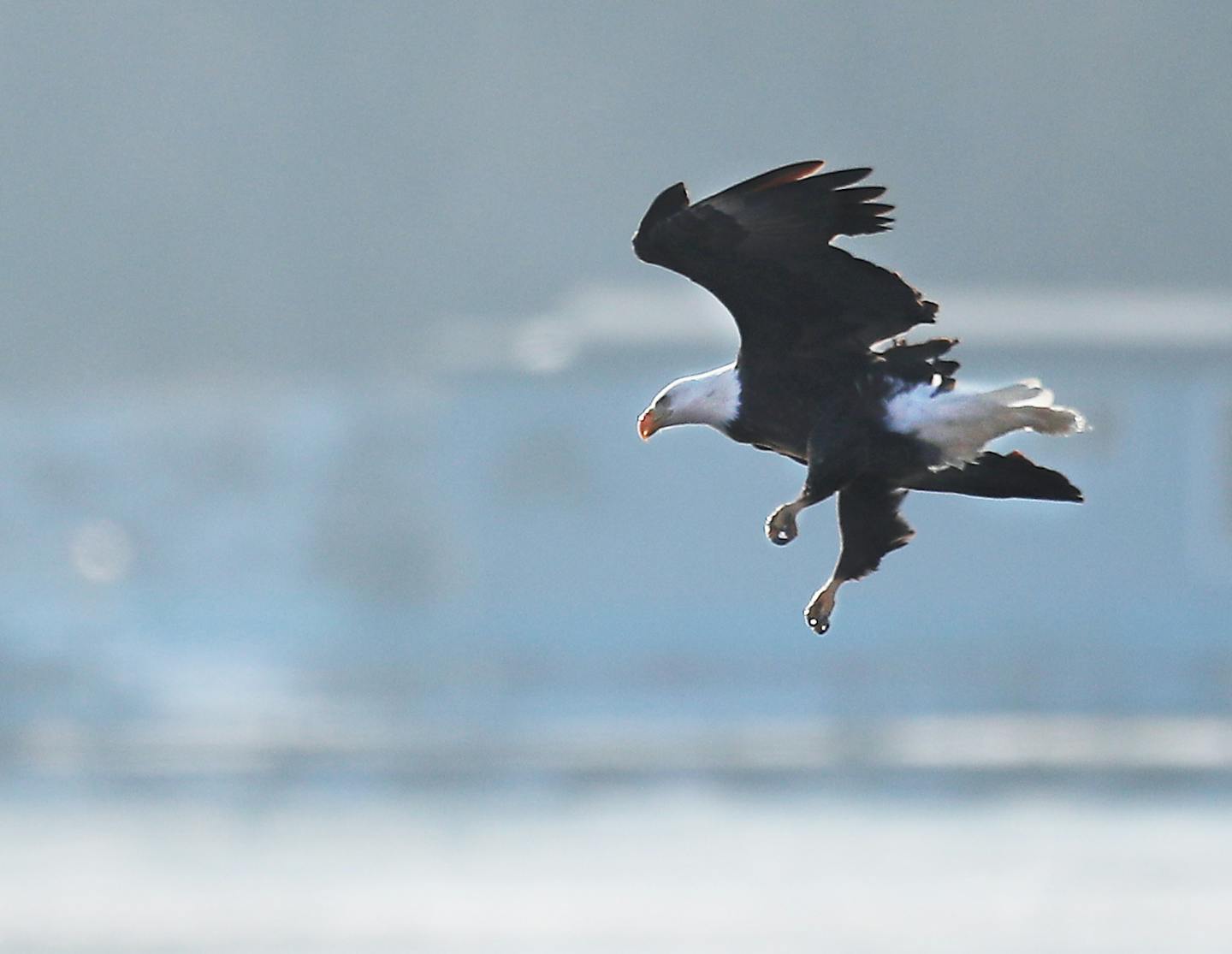More than 11,000 people are part of a public Facebook group devoted to Minnesota's raptor family on EagleCam, not to mention thousands more checking in from almost every country and state. And it's been a celebratory time. Two chicks hatched last weekend to the parents, aka Harry and Nancy, bode well for season eight of the wildly popular happenings in the metro-area nest.
The scene is indicative of the times: Bald eagles are thriving.
In a report last week, the U.S. Fish and Wildlife Service (FWS) estimated the population at 316,700 birds in the Lower 48 states — four times the number since the last estimate in 2009. Scientists relied on aerial surveys in 2018 and 2019 coupled with eBird data from the Cornell University Lab of Ornithology for the update, which included more than 71,000 occupied nests, a 134% increase since 2009.
By any metric, Minnesota is at the heart of the national symbol's resurgence. The Mississippi Flyway is among the key survey areas and boasts the most eagle breeding sites and bird numbers. By any observation, too.
Lori Naumann said the population in Minnesota has been doing well "for quite a while now."
"[The eagle report] doesn't surprise me, and it obviously is very good news," said Naumann, who runs the EagleCam program for the Department of Natural Resource's Nongame Wildlife Program.
It's a brighter picture to be sure, because Naumann recalls some of the dire days. Minnesota had only 181 nesting pairs in 1980, yet it was a state on the rebound. Birds arrived from Alaska. In turn, Carrol Henderson, who founded the Nongame Wildlife Program, help lead the raptor's rebound in Minnesota while also helping restore populations elsewhere. For years Minnesota captured and sent up to four chicks to other states, including Pennsylvania, Tennessee, and Missouri.
Naumann said bald eagles recovered in Minnesota quicker than in other states because of intense efforts on research, surveys and conservation. Some of the research involved analyzing toxins such as mercury in blood samples taken from eagle chicks on northern lakes. It's an issue that hasn't gone away all these years later, tainting the promising recovery. Also, many sick and dying bald eagles treated at the Raptor Center at the University of Minnesota have lead poisoning.
"It gives me a sense of pride knowing I work for the program that helped the entire U.S. population," she said.
In the Lower 48, bald eagles were at an all-time low 417 nesting pairs in 1963, the numbers ravaged by the use of the DDT. The pesticide poisoned eagles and also caused them to produce thinner eggshells that would break under their weight. DDT was banned in 1972. Already shielded by federal law, the eagle was one of the original species protected by the Endangered Species Act when it went into effect in 1973.
The bird was removed from the list in 2007 but remained on the "threatened" list. There were an estimated 9,749 nesting pairs then, and Minnesota had more than 2,300 of them. The raptor's recovery ended the need for surveys by the state.
Beyond data, wildlife observers say there are unmistakable signs of increased eagle activity. It's estimated that only half of all young survive to fledge the nest, but Naumann said watching successful breeding seasons of two to three chicks, like those playing out on EagleCam, is a marker that the population is multiplying every year.
An increase in battles for territory or a mate, like that at the site of the EagleCam, is evident, too. Naumann also said the density of nesting sites has increased. Decades ago, eagles wouldn't nest within 50 miles of one another because of their defensiveness. Today, there are close to 15 active nests with a 5-mile radius of the EagleCam site. Beyond breeding sites, more birds have been seen, either migrating through or juveniles too young to breed.
In 2017, the DNR estimated Minnesota had nearly 10,000 nesting pairs.
"We have a very, very healthy population and a healthy competition with Florida on who has the largest population in the Lower 48 states," Naumann said.
The National Eagle Center in Wabasha, Minn., just wrapped up its March festival, with preregistered visitors on weekends. An estimated 3,000 people attended, some of whom arrived with anecdotes of seeing more eagles than they can remember — more evidence yet.
The common denominator for eagle-heavy states such as Minnesota, Wisconsin and even Florida is water, said Ed Hahn, center marketing manager. Beyond the front windows of the center, eagles congregate on open areas of the Mississippi River, especially in winter.
Hahn said that while the center's educational mission dovetails with news of the health of the bald eagle and where it is thriving, the public must be reminded of what was nearly lost in the early 1960s. Bald eagles were poster material for environmental catastrophe, but their narrative has shifted.
"Bald eagles are the poster for success," he said. "We need to look to the bald eagles' story of successful conservation and their return from the brink, and use them as ambassadors to extend that success to other environmental issues and critically endangered wildlife."





